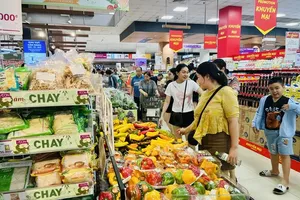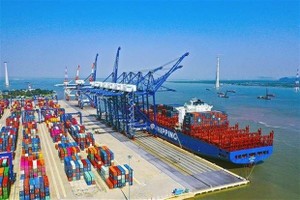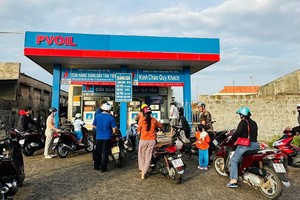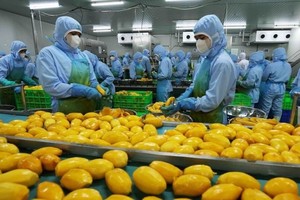
Growers earn no profits
Currently, coffee in the Central Highlands provinces has started to ripen, and farmers are rushing to harvest coffee. Due to unfavorable weather, coffee yield in some regions has dropped heavily. Meanwhile, the prices of coffee this year are too low. Concentrating on collecting the last coffee trees in his farm, Mr. Pham Tien, a farmer in Quang Tien Commune in Cu M'gar District in Dak Lak Province, said that his family had nearly one hectare of land and had grown coffee since 1998 to now. Although he had invested and taken care of his coffee trees carefully, his coffee plantation had not achieved coffee yields as high as expected in recent years. In previous years, he collected 3 tons of coffee beans. However, he could only get nearly 2 tons this year. The coffee output could not make up for the investment cost and his effort for the whole year.
Sharing the same situation, Mr. Nguyen Hoang Vu, a farmer in Hoa Thang Commune in Buon Ma Thuot City of Dak Lak Province, said that his family had 1.5 hectares of coffee. This year, coffee production decreased by nearly 30 percent, so he could only collect less than 3 tons of coffee beans. On average, the annual cost for irrigation, fertilizers, and labor was VND50 million-VND60 million per hectare. Of these, labor costs and fertilizers increased each year, but coffee prices continued to nail at extremely low levels, causing farmers to earn no profits or even not have enough money to make long-term reinvestment in this crop.
In Lam Dong Province, a large area of coffee trees have been replanted and grafted to increase productivity in recent years. However, the prices of coffee have stood at low levels for many years, so many people no longer consider it as the priority crop. Mr. Nguyen Van Hoang, a farmer in Phuc Tho Commune in Lam Ha District in Lam Dong Province, had just harvested 1.7 hectares of coffee, with a yield of about 6 tons of fresh coffee. In comparison with previous years, the above output has improved significantly, thanks to the area of grafted coffee trees. However, joy was mixed with concern as just after the coffee was harvested, the fertilizer seller came to buy coffee for VND33,000 per kilogram. After deducting the fertilizer cost, there was not much left. Mr. Hoang said that the heaviest investment was four times of fertilization that cost about VND90 million, and the cost to hire workers to harvest coffee at the end of the crop at VND25 million. If he also hired workers to take care of his coffee trees and remove weeds, even selling all the harvested coffee would have not been able to compensate for the production cost. To overcome this difficult period, Mr. Hoang has switched to grow vegetables on 4,000 square meters. However, efficiency is not high, just enough for him to cover his daily expenses.
Promoting support for coffee replanting
According to Ms. Vu Thi Thanh Binh, Deputy Head of Department of Crop Production and Plant Protection of Dak Lak Province, the coffee area in the whole province is about 203,000 hectares, with the estimated coffee yield in the crop 2019-2020 at 465,000 tons. However, due to the large area of old coffee trees, unfavorable weather, and prolonged drought, coffee output has decreased more sharply than expected.
“Currently, organic coffee products are favored in the market. In the province, many deep-processing enterprises have already cooperated with farmers to buy organic coffee at higher prices than the market ones. This direction also helps farmers to reduce labor costs,” Ms. Binh added.
In recent years, Lam Dong Province has been a bright spot in implementing coffee replanting, which has partly eased the pressure caused by low prices. Mr. Nguyen Van Chau, Deputy Director of the provincial Department of Agriculture and Rural Development, said that by grafting and replanting more than 73,180 hectares of coffee trees , the average coffee yield of the province has risen from 26.1 quintals per hectare in 2012 to 32.5 quintals per hectare now. It has somewhat compensated for the gap caused by low prices. The whole province currently has 174,142 hectares of coffee trees, with an output of 516,602 tons.
“In recent years, the province has encouraged farmers in the areas with water scarcity and sloping land to switch to grow other crops, but still ensured the coffee area according to the annual cultivation plan. In the long term, the province will continue to support people to intercrop fruit trees, such as avocado, durian, macadamia, and mangosteen, to increase income and at the same time develop shade trees to support the growth of coffee trees,” Mr. Chau analyzed.
























